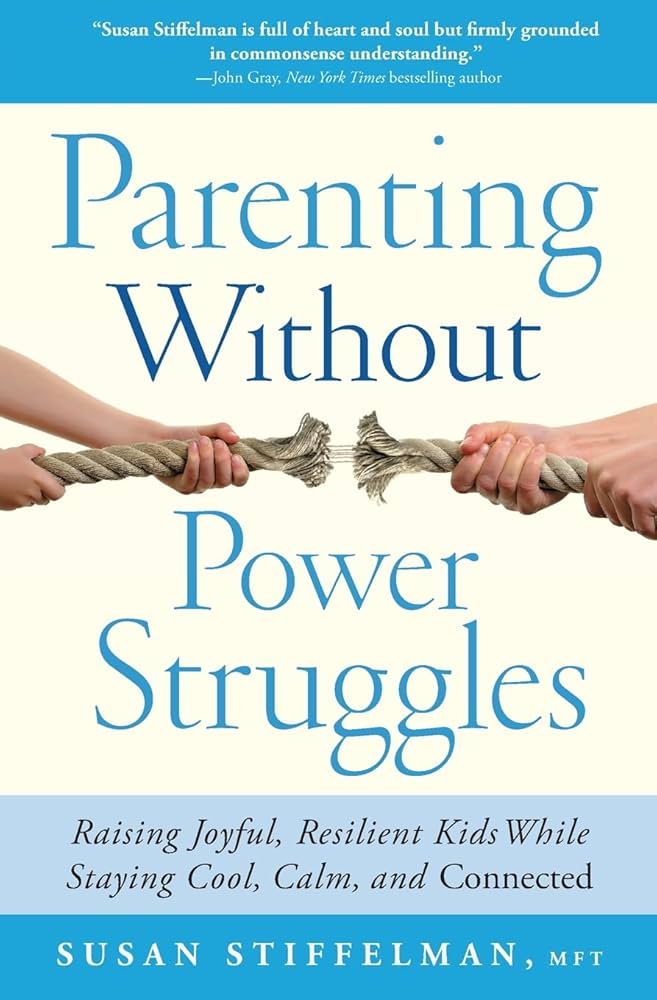
Parenting without Power Struggles by Susan Stiffelman
Parenting without Power Struggles by Susan Stiffelman offers a compassionate and practical approach to parenting that helps parents foster a deeper connection with their children while avoiding the common pitfalls of power struggles. This article will delve into the key concepts and strategies presented in the book, offering valuable insights for parents looking to create a more harmonious family environment.
Understanding Power Struggles
One of the main themes in Parenting without Power Struggles is understanding the root causes of power struggles. Stiffelman explains that these conflicts often arise from a child's need for autonomy and a parent's desire for control. By recognizing this dynamic, parents can approach conflicts with empathy and patience.
Key Strategies for Reducing Power Struggles
Stiffelman provides several key strategies for reducing power struggles:
- Empathetic Listening: Actively listening to your child's concerns without judgment.
- Setting Clear Boundaries: Establishing and maintaining clear, consistent boundaries.
- Staying Calm: Remaining calm and composed during conflicts to model self-regulation.
- Offering Choices: Giving children choices to help them feel more in control.
Empathetic Listening
Empathetic listening involves fully engaging with your child when they express their feelings or concerns. This means putting aside distractions and really hearing what they are saying. By doing this, parents can validate their child's emotions and build a stronger connection.
Setting Clear Boundaries
Setting clear boundaries is crucial for maintaining order and safety in the household. Stiffelman emphasizes the importance of consistency and clarity in communicating expectations to children. This helps them understand what is acceptable and what is not.
Staying Calm
Staying calm during conflicts is easier said than done, but it is essential for reducing power struggles. When parents react with anger or frustration, it can escalate the situation. Instead, parents should strive to remain composed and model appropriate behavior.
The Role of Connection in Parenting
Another important aspect of Parenting without Power Struggles is the emphasis on connection. Stiffelman argues that a strong parent-child connection can prevent many power struggles from occurring in the first place. This connection is built through regular, positive interactions and a deep understanding of your child's needs and personality.
Building a Strong Connection
To build a strong connection, parents should focus on:
- Spending quality time together
- Showing genuine interest in their child's activities
- Communicating openly and honestly
Spending Quality Time Together
Quality time is about more than just being in the same room. It involves engaging in activities that your child enjoys and being present in the moment. This helps your child feel valued and understood.
Showing Genuine Interest
Showing genuine interest in your child's activities and passions demonstrates that you care about their individuality. Ask questions, participate in their hobbies, and celebrate their achievements.
Communicating Openly and Honestly
Open and honest communication is the cornerstone of a strong parent-child relationship. Encourage your child to express their thoughts and feelings, and be willing to share your own in a way that is appropriate for their age and maturity level.
Conclusion
Parenting without Power Struggles by Susan Stiffelman offers a wealth of practical advice for parents looking to create a more peaceful and connected family environment. By understanding the root causes of power struggles and implementing strategies like empathetic listening, setting clear boundaries, and building a strong connection, parents can navigate the challenges of parenting with confidence and compassion.
For more insights and resources on parenting, visit our website at Read Review Talk and our blog at Read Review Talk Blog.
| Strategy | Description |
|---|---|
| Empathetic Listening | Listening to your child's concerns without judgment |
| Setting Clear Boundaries | Establishing and maintaining consistent boundaries |
| Staying Calm | Remaining composed during conflicts to model self-regulation |
| Offering Choices | Giving children choices to help them feel in control |



